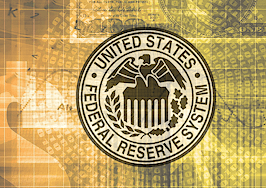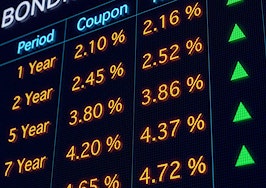- Negative rates could happen only to adjustable-rate loans.
- Here the structure of our ARMs makes negative payments impossible because of a near-hit experience back in 2004.
- Every mortgage contract began to identify a rate “floor.” In mortgages the typical language has been “... in no case lower than the margin amount.” You’ll find all new HELOC documents in the last dozen years have explicit rate floors.
Don’t get your hopes up.
But, you’ve got clients asking, and the national news media is hopelessly lost on the subject, including the financial press.
Can there be such a thing as a negative interest rate?
First things first. Negative rates could happen only to adjustable-rate loans. Fixed-rate loans are…fixed rate. At the rate you got on the first day, permanently.
The first ARMs appeared in 1980 to protect banks and investors from rising rates — Paul Volcker had taken the bank cost of money over 14 percent by then. Lending at adjustable rates is as old as banking, but 1980 brought the first U.S. adjustable home loans since about 1930 (the prior episode did not end well).
ARMs always involve the same components: First, an index which would be independent of banks (no rigging) but would reflect changes in their cost of money. The most common were the 11th District Cost of Funds, “COFI” (the average cost of deposits among California and Arizona savings and loans), the one-year T-bill, and one-year London Interbank Offered Rate (LIBOR).
To each index, add a margin (which the rest of the world calls a “spread”) to be added to the index value at each adjustment and then used to compute the new payment. COFI margins were variable, from 1.75 percent to 3.50 percent (the index is gone now); T-Bills always plus 2.75 percent (also gone now); and LIBOR today plus 2.25 percent.
The global effect
My first experience with negative rates was in 1973 at the onset of a great wave of inflation. Global cash headed for “hard money” Switzerland, forcing up the value of the Swiss franc and threatening to ruin the Swiss economy.
The Swiss solution: charge foreigners to put their money in Swiss banks. It worked. If the negative rate was deeper than the threat of inflation, no point in putting money into francs.
Today’s episode of negative rates overseas is different but in some ways the same. Holland and Sweden and the Swiss again have pushed away unwanted foreign cash with negative rates.
However, the operations of the European Central Bank and the Bank of Japan are entirely different. Europe and Japan are on or near or over the edge into disastrous deflation, in which cash is worth more tomorrow than today, and no one wants to borrow or to lend.
The purpose of negative rates in this circumstance is to make it expensive to hoard cash, hoping to force consumers to spend and banks to lend. The early results are poor. Negative rates seem to have created fear and caused individuals, businesses and banks to hold more cash, not less.
Not all rates in Japan or Europe are negative, just a few classes of bank-held cash, but they have forced some ARM indexes below zero. Some banks in Holland have made infinitesimally small payments to mortgage holders. In Spain, some mortgage contracts appear to command such payments, but banks refuse.
What about the U.S.?
Here the structure of our ARMs makes negative payments impossible because of a near-hit experience back in 2004. The Fed cut the overnight cost of money to 1.00 percent in 2004, and banks got the message: ARMs designed to protect against high rates could be disastrous on the low side.
Very quickly, every mortgage contract began to identify a rate “floor.” In mortgages the typical language has been “… in no case lower than the margin amount.” The index could go to minus-10 percent, but a LIBOR ARM would still cost the borrower 2.25 percent. Home equity lines of credit (HELOCs) have terms unique to each issuing bank, but all are tied to “prime,” which in the modern era is 3 percent above the Fed’s cost of money.
In theory if the Fed went 4 percent below zero, banks would have to pay you for your HELOC. However, you’ll find all new HELOC documents in the last dozen years have explicit rate floors.
Negative mortgage rates fail on two grounds. First, banks saw them coming and beat us to it.
Second, you don’t want to wish on America the economic circumstances producing negative rates. Not ever.
Lou Barnes is a mortgage broker based in Boulder, Colorado. He can be reached at lbarnes@pmglending.com.












